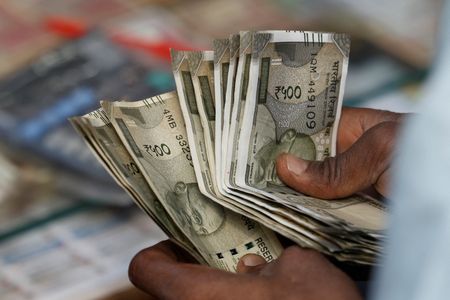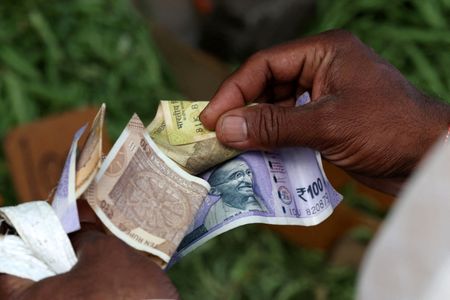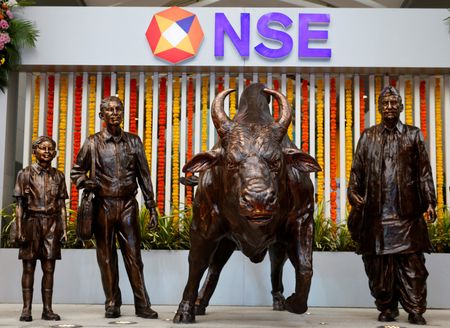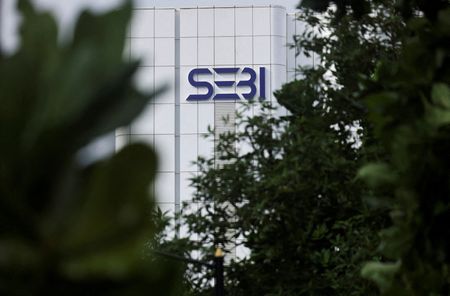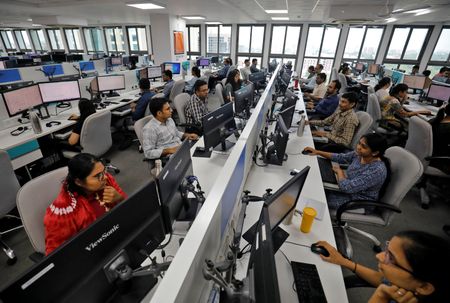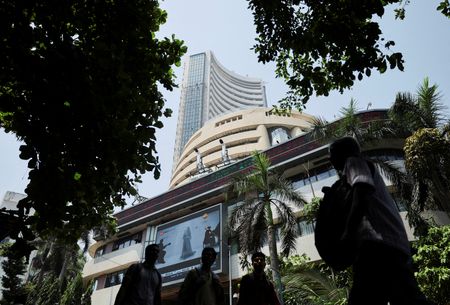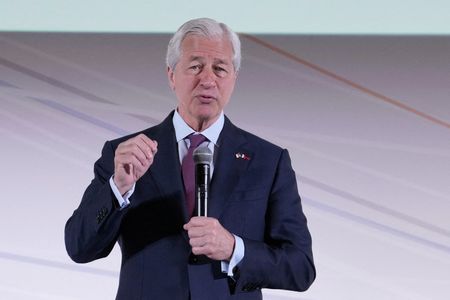By Nimesh Vora
MUMBAI (Reuters) -Market expectations for swings in the Indian rupee remain subdued despite the currency slipping to an all-time low on the back of steep U.S. tariffs and an increase in H-1B visa fees that could disrupt services exports.
The rupee fell 0.52% to 88.7925 per U.S. dollar on Tuesday to a record low. Volatility expectations, however, barely budged.
Three-month dollar/rupee implied volatility was at six-month lows, and one-year volatility at a year-to-date low.
Implied volatility, a key metric for pricing options, typically rises when emerging market currencies hit lifetime lows, reflecting expectations of wider fluctuations.
However, this has not been the scenario for the rupee, thanks to the increased participation of companies in the options market and subdued offshore demand for options that bet on a rupee decline.
By hedging dollar exposure with options that cost little or nothing, companies are effectively supplying volatility to banks, contributing to subdued expectations for rupee swings.
The sustained corporate supply of volatility marks a major transformation in India’s options market, a portfolio manager at a Singapore-based hedge fund said.
A foreign bank’s head of FX and rates trading said that corporate hedging has effectively anchored volatility and cited a recent trade where a major public-sector firm hedged dollar exposure with forwards and sold dollar/rupee call options.
Corporate activity in dollar/rupee options has surged 70% to $73 billion between January and August, compared with the same period last year, clearing platform data showed. The market was valued at less than $20 billion in 2020.
Meanwhile, reluctance among offshore traders to position for a steep fall in the rupee — which would lift implied volatility — underscores the Reserve Bank of India’s role in keeping volatility expectations subdued.
The RBI’s regular interventions have curbed expectations of disorderly swings, while memories of past losses from bets of a big rupee decline dampen offshore appetite for buying volatility, bankers said.
The bankers did not want to be named since they are not authorised to speak to media.
The RBI, under Governor Sanjay Malhotra, has allowed the rupee to trade within a wider band compared to his predecessor Shaktikanta Das.
Despite this, expectations for currency volatility remain muted, reflecting changes in the options market structure and the effectiveness of the central bank’s strategy, the foreign bank’s head of trading said.
The RBI maintains its exchange rate policy is focused on ensuring orderly market conditions and limiting excessive volatility.
(Reporting by Nimesh Vora, additional reporting by Jaspreet Kalra; Editing by Mrigank Dhaniwala)

